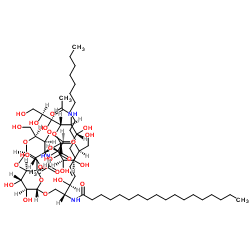Characterization of inducible models of Tay-Sachs and related disease.
Timothy J Sargeant, Deborah J Drage, Susan Wang, Apostolos A Apostolakis, Timothy M Cox, M Begoña Cachón-González
Index: PLoS Genet. 8(9) , e1002943, (2012)
Full Text: HTML
Abstract
Tay-Sachs and Sandhoff diseases are lethal inborn errors of acid β-N-acetylhexosaminidase activity, characterized by lysosomal storage of GM2 ganglioside and related glycoconjugates in the nervous system. The molecular events that lead to irreversible neuronal injury accompanied by gliosis are unknown; but gene transfer, when undertaken before neurological signs are manifest, effectively rescues the acute neurodegenerative illness in Hexb-/- (Sandhoff) mice that lack β-hexosaminidases A and B. To define determinants of therapeutic efficacy and establish a dynamic experimental platform to systematically investigate cellular pathogenesis of GM2 gangliosidosis, we generated two inducible experimental models. Reversible transgenic expression of β-hexosaminidase directed by two promoters, mouse Hexb and human Synapsin 1 promoters, permitted progression of GM2 gangliosidosis in Sandhoff mice to be modified at pre-defined ages. A single auto-regulatory tetracycline-sensitive expression cassette controlled expression of transgenic Hexb in the brain of Hexb-/- mice and provided long-term rescue from the acute neuronopathic disorder, as well as the accompanying pathological storage of glycoconjugates and gliosis in most parts of the brain. Ultimately, late-onset brainstem and ventral spinal cord pathology occurred and was associated with increased tone in the limbs. Silencing transgenic Hexb expression in five-week-old mice induced stereotypic signs and progression of Sandhoff disease, including tremor, bradykinesia, and hind-limb paralysis. As in germline Hexb-/- mice, these neurodegenerative manifestations advanced rapidly, indicating that the pathogenesis and progression of GM2 gangliosidosis is not influenced by developmental events in the maturing nervous system.
Related Compounds
| Structure | Name/CAS No. | Molecular Formula | Articles |
|---|---|---|---|
 |
Ganglioside GM2 Mixture (bovine brain) (ammonium salt)
CAS:19600-01-2 |
C67H121N3O26 |
|
Altered levels of α-synuclein and sphingolipids in Batten di...
2014-04-15 [Gene 539(2) , 181-5, (2014)] |
|
Ganglioside-embedding small bicelles for probing membrane-la...
2013-02-11 [Chem. Commun. (Camb.) 49(12) , 1235-7, (2013)] |
|
Use of carbohydrate-conjugated nanoparticles for an integrat...
2014-11-01 [Curr. Pharm. Biotechnol. 13(14) , 2612-6, (2012)] |
|
Abnormal gangliosides are localized in lipid rafts in Sanfil...
2012-06-01 [Neurochem. Res. 37(6) , 1372-80, (2012)] |
|
Therapeutic effects of stem cells and substrate reduction in...
2012-06-01 [Neurochem. Res. 37(6) , 1335-43, (2012)] |